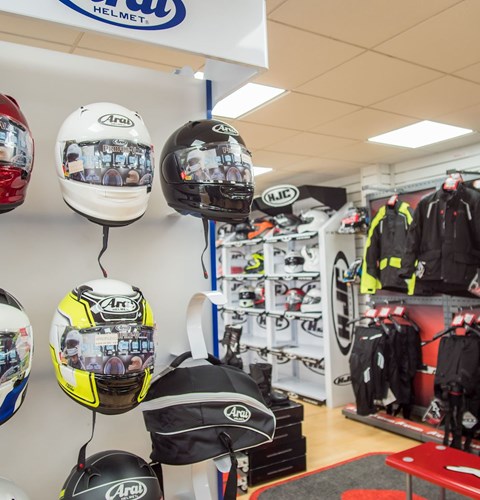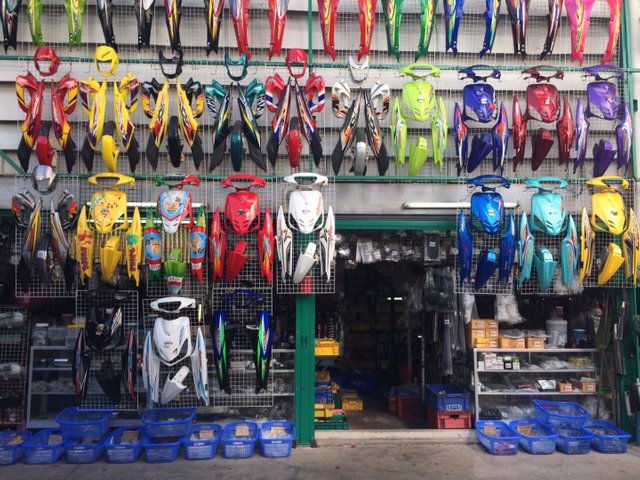Discover High Quality Moto Parts NZ for All Your Motorcycle Requirements
Discover High Quality Moto Parts NZ for All Your Motorcycle Requirements
Blog Article
Comprehending the Crucial Parts of a Bike: A Comprehensive Guide for Fanatics
For bike enthusiasts looking to boost their riding experience and guarantee their bikes run efficiently, understanding the vital components of a motorbike is vital. Each element, from the engine's elaborate functions to the crucial function of the stopping systems, not only affects efficiency however also safety and security and convenience.
Engine Components

The camshaft plays a vital duty in controlling the timing of the engine's valves, making certain the precise opening and closing required for reliable gas and air intake, as well as exhaust expulsion. This timing is important to maintaining ideal engine efficiency and performance. In addition, the carburetor or fuel shot system, depending on the bike model, is accountable for mixing air with fuel in the correct ratio for combustion.
The cooling system, either air or liquid-based, functions to preserve the engine's temperature level within functional restrictions, preventing getting too hot and ensuring longevity - motorcycle parts nz. Each element, carefully developed and integrated, contributes to the smooth procedure of the engine, specifying the motorbike's power output and overall performance
Transmission System
Integral to the motorbike's capability, the transmission system guarantees effective power transfer from the engine to the wheels. This system makes up numerous essential parts, including the clutch, gearbox, and last drive, each playing an important role in converting the engine's power right into movement. The clutch, usually operated by a hand bar, offers to engage and disengage the engine from the transmission, permitting for smooth equipment changes and regulated velocity.
The gearbox, often described as the transmission correct, includes a set of equipments that bikers can by hand move through to readjust the bike's speed and torque output. These gears are arranged in a series that enables the motorbike to speed up smoothly and maintain optimal engine performance throughout numerous speeds. A lot of motorbikes utilize a consecutive gearbox, needing the biker to shift equipments in an established order.
Braking Devices
While comprehending the transmission system is essential to harnessing a bike's power, similarly vital is the ability to regulate and stop that power successfully, which is where braking mechanisms enter into play. Brakes are crucial for security and efficiency, supplying the biker with the required control to browse numerous terrains and conditions. Commonly, motorbikes include 2 kinds of stopping systems: disc brakes and drum brakes.
Disc brakes are a lot more widespread in contemporary motorbikes due to their remarkable efficiency. This system supplies better heat dissipation, constant efficiency, and boosted stopping power, particularly in wet conditions.
Alternatively, drum brakes, though much less usual, are still located in some motorcycles. They work by pressing brake shoes versus the internal surface area of a drum affixed to the wheel. While typically less efficient in warm dissipation and quiting power, drum brakes are simpler and extra cost-efficient.
Recognizing these braking systems' nuances permits motorcyclists to preserve their motorbikes appropriately and appreciate the engineering that makes sure secure and effective quiting.
Suspension and Guiding
Suspension and steering systems are vital components that significantly affect a bike's handling and experience comfort. The shock absorber, containing forks at the front and shock absorbers at the back, soaks up road irregularities, boosting security and control. Front forks, usually telescopic or inverted, compress and rebound to minimize influences, while rear shock absorbers maintain tire contact with the road, essential for traction and security.
Guiding, centered around the handlebars, links the biker to the motorcycle's directional control. The steering head bearings make sure smooth operation, enabling specific maneuverability. Proper alignment and upkeep of these bearings are essential for foreseeable guiding reaction and reducing motorcyclist fatigue.
The suspension's adjustability is one more critical element; preload, damping, and rebound settings enable customization to match various riding problems and styles. This versatility is essential for enhancing efficiency, whether browsing metropolitan roads or tackling rugged routes. Innovations like electronic shock absorber offer real-time modifications, boosting trip high quality throughout diverse terrains.

Electric Systems
After making sure a smooth and controlled experience via effective suspension and steering systems, interest transforms to the electric systems, a crucial facet of modern motorcycles. These systems play a critical duty not just in beginning the engine but also in powering various components that enhance the performance and safety and security of the motorcycle.
At the heart of a motorcycle's electrical system is the battery, address which shops electric energy needed for beginning the engine and powering complementary systems - motorbike shop. The generator or generator, paired with the rectifier-regulator, makes helpful hints certain the battery continues to be billed while the motorbike is in procedure, transforming power into electrical energy and maintaining voltage levels
The ignition system, another crucial component, is in charge of firing up the air-fuel mix in the engine's cyndrical tubes. Modern motorcycles frequently make use of a digital ignition system, supplying higher efficiency and reliability contrasted to standard systems.
Illumination systems, including fronts lights, tail lights, and signs, are likewise important, guaranteeing visibility and safety and security for the motorcyclist. Extra electronic parts such as sensing units, control units, and presents add to sophisticated features like fuel shot administration, anti-lock braking systems (ABS), and electronic control panels, even more enhancing the riding experience.
Conclusion
A thorough understanding of a motorbike's crucial elements, including the engine, transmission system, stopping devices, suspension, steering, and electrical systems, is important for enthusiasts aiming to optimize performance, security, and convenience. Mastery of these aspects permits notified choices relating to upkeep and upgrades, ultimately beanie helmet dot enhancing the riding experience. By incorporating this expertise, motorcyclists can ensure their motorcycles operate at peak effectiveness and integrity, therefore making the most of both pleasure and durability of their automobiles.
For bike fanatics looking to boost their riding experience and guarantee their bikes run efficiently, recognizing the essential components of a motorcycle is critical.Essential to the motorbike's performance, the transmission system guarantees effective power transfer from the engine to the wheels.While comprehending the transmission system is crucial to taking advantage of a motorbike's power, similarly essential is the ability to control and quit that power properly, which is where stopping systems come into play. Generally, motorcycles include 2 types of braking systems: disc brakes and drum brakes.
A comprehensive comprehension of a motorcycle's essential parts, consisting of the engine, transmission system, stopping systems, suspension, steering, and electric systems, is vital for fanatics aiming to optimize safety, comfort, and efficiency.
Report this page